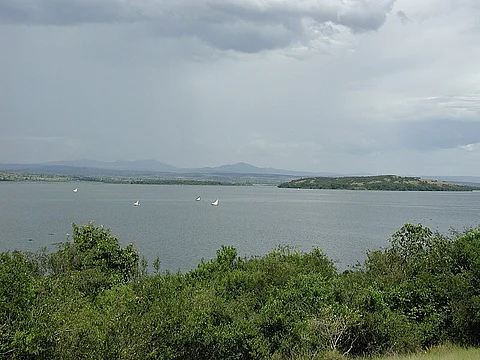

An international team of researchers from North America and Kenya has completed a genetic survey of cyanobacteria — photosynthetic microscopic organisms also called harmful algal blooms — in the Winam Gulf of Lake Victoria, Kenya. This critical study, published in the journal Applied and Environmental Microbiology on January 8, 2025, is expected to help local officials track potentially hazardous cyanobacterial harmful algal blooms (cyanoHAB).
The paper also provides a model for understanding how such blooms could evolve in Lake Erie, United States, under a warming climate. By identifying parallels between Lake Victoria and Lake Erie, the study highlighted the urgent need for global action to mitigate the effects of harmful algal blooms in a changing climate.
Cyanobacteria, formerly known as blue-green algae, form dense and sometimes toxic blooms in freshwater and marine environments. These blooms disrupt ecosystems, degrade water quality, and pose serious risks to humans, livestock, and aquatic life.
The research team found that cyanoHAB events in the Winam Gulf were not restricted to coastal zones but occurred extensively across the gulf. In 2022, the blooms were most prolific near Homa Bay, while in 2023, they were observed outside the gulf near Bondo and the Yala River mouth. Dolichospermum dominated these blooms, with Microcystis present in lower abundance.
Metagenomic analysis showed that bloom-forming cyanobacteria employ diverse survival strategies to adapt to different environmental conditions around the gulf. These include extensive use of biosynthetic gene clusters (BGC), which enable the bacteria to thrive in varying conditions. The diversity and abundance of BGCs in the Winam Gulf were found to be similar to those in western Lake Erie, highlighting the potential for cross-regional insights.
The Winam Gulf, known for its prolific year-round cyanoHABs, is one of Lake Victoria’s most productive fishing basins and sustains Kenya’s third-largest city, Kisumu. The study investigated cyanobacterial assemblage, function, and biosynthetic potential across different regions of the gulf, revealing significant findings about the threats posed by toxic cyanobacteria to ecosystems, human health, and water quality.
The findings underline the health risks posed by toxic cyanobacteria. Contaminated water cannot be made safe by boiling, as heat can rupture the bacteria, releasing even more toxins. This poses a significant challenge for communities relying on Lake Victoria for drinking water and other needs.
“Our collaboration wanted to study not only harmful algal blooms, but also the social consequences of HABs in the context of the Winam Gulf being a model for a warming Lake Erie,” said Lauren N Hart, University of Michigan and the lead author of the study.
The study advocated for integrating advanced “Omics” techniques — such as metagenomics, metatranscriptomics, and metabolomics — into current monitoring frameworks for the Winam Gulf and other African Great Lakes affected by toxic cyanobacteria. These techniques could significantly enhance research capacity, inform water management strategies, and protect both human and ecosystem health.